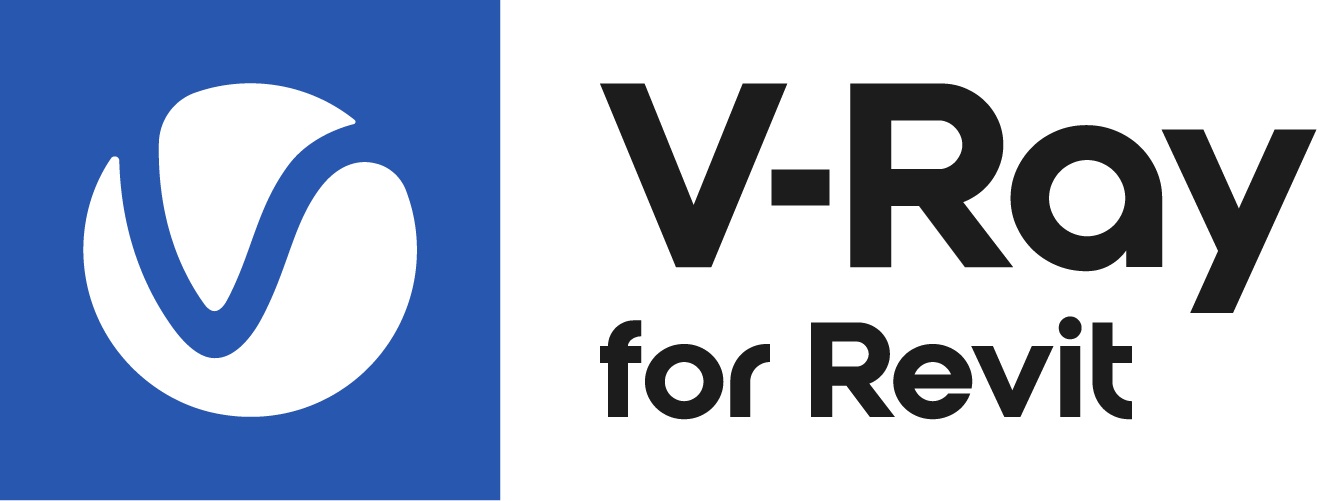This page provides information on the Materials tab in the V-Ray Appearance Manger.
Overview
The Materials tab allows you to replace the standard Revit materials with more powerful and versatile V-Ray materials, including .vrscan files. This includes the ability to properly scale and rotate V-Ray materials and a quick link to the V-Ray Asset Editor to edit them.
In order to replace a Revit material with a V-Ray one, you first need to create V-Ray materials in the Asset Editor. Those will then become available in the drop-downs next to each material in the Appearance Manager.
If you don't associate a Revit material with a V-Ray one, the Revit material will be automatically converted to a V-Ray material during V-Ray rendering. It will use the material properties specified in the Revit Asset Browser.
With V-Ray 5, update 1, you can also promote AutoGen materials based on Revit Prism materials as V-Ray ones to the Asset Editor. This equips the AutoGen materials with parameters specific for V-Ray Materials only, thus further expanding the possibilities for modifying the AutoGen materials.
Search Bar and Filters
This allows you to search for materials. Note that if a Revit Identity Class name is inputted in the search bar, only the materials belonging to that class are displayed in the list below.
You can also choose from the following options in the Filter drop-down menu:
Show Materials
All – Allows you to choose from all materials in your library (includes defaults and materials in the project).
Used in project – Allows you to choose from all materials in your current Project.
Latest Render – Shows a list of all materials that were exported by V-Ray during the latest render you have done.
V-Ray Mapping
All – Allows you to see all materials in your library (includes defaults and materials in the project).
Mapped – Allows you to see all materials that have been assigned a V-Ray Material.
Unmapped – Allows you to see all materials that have not been assigned a V-Ray Material yet.
Transparency
All – Allows you to see all materials, i.e. the Transparency filter is not applied.
Opaque – Allows you to see only the opaque materials in the project.
Transparent – Allows you to see only the transparent materials in the project.
Opaque and Transparent filters can be used as an alternative to the Global Overrides options, with the ability to exclude specific materials from the override.
V-Ray Grass/Fur
All – Allows you to see all materials, i.e. the V-Ray Grass/Fur filter is not applied.
Mapped – Allows you to see all materials that have been assigned a V-Ray Grass/Fur.
Unmapped – Allows you to see all materials that have not been assigned a V-Ray Grass/Fur.
Fur assigned to a material can be disabled from the Fur () icon in the Appearance Manager when the material is selected.
A grey dot next to a material indicates that Fur is assigned to that material.
V-Ray Displacement
All – Allows you to see all materials, i.e. the V-Ray Displacement filter is not applied.
Mapped – Allows you to see all materials that have been assigned a V-Ray Displacement.
Unmapped – Allows you to see all materials that have not been assigned a V-Ray Displacement.
Displacement assigned to a material can be disabled from the Displacement () icon in the Appearance Manager when the material is selected.
A grey dot next to a material indicates that Displacement is assigned to that material.
Right-click on the filter icon, resets the filters to their defaults.
When you click on the Pick Material button (), and select a surface in the Revit model, you can see only its material displayed in the material list.
Note that the option works only on surfaces that are native for the Revit model and does not work for linked models.
Material Transform
These settings allow you to control the scale, rotation and offset of all maps that a V-Ray material comprises. Use them after you replace a Revit material with a V-Ray one to match the V-Ray material's map size with your project scale.
Width/Height – Set the width and the height of the V-Ray material.
Rotation – Rotates the V-Ray material (in degrees).
Offset V/H – Controls the V-Ray material offset in the vertical (V) and horizontal (H) direction.
Replacing Revit material with a V-Ray material
Each Revit material can be replaced with a V-Ray material from the drop-down menu of the Revit material in the Appearance Manager. Both left- and right-click open the menu. Note that the V-Ray material has to be created in the Asset Editor first.
When a Revit material is replaced, the V-Ray logo in the Appearance Manager becomes darker. In case a V-Ray material is removed from a Revit material, left-click on the logo, restores the last V-Ray material that was assigned to the Revit Material.
Promote Revit materials as V-Ray ones in Asset Editor
Revit Prism materials can be promoted and treated as V-Ray materials in the V-Ray Asset Editor. The Promote in Asset Editor () button opens the Asset Editor (if it has not been opened beforehand) and sends the AutoGen material to the Materials list, where you can modify it just like any V-Ray material. All V-Ray Material parameters are available for the promoted AutoGen material.
One AutoGen material can be promoted multiple times, and each time a new V-Ray Material is created in the Asset Editor.
Pressing Ctr+Click on the Promote in Asset Editor button automatically assigns the converted V-Ray Material as a replacement to the source AutoGen material.


